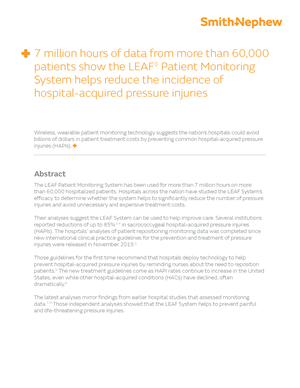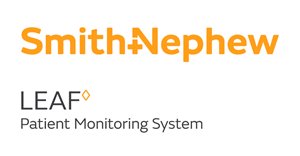Reducing Pressure Injuries and Related Costs in Hospitals by Utilizing Patient Monitoring Systems
Each year, more than 2.5 million acute care patients in the United States suffer from hospital-acquired pressure injuries (HAPIs) and as many as 60,000 die from their complications. The cost of caring for these patients – estimates range from $9.9 billion to $11 billion a year – is greater than the cost of treating seven other common hospital-acquired conditions (HACs) combined.
Traditional systems to remind nurses to reposition patients are like kitchen timers that ring at a set interval, generally a single interval for all patients in an institution. By utilizing a wireless, wearable patient monitoring technology, healthcare providers can optimize repositioning by tailoring turn frequency for each patient’s needs. This technology can monitor a patient’s movement and provides visual information to help staff to make sure patients are repositioned according to their individual turn protocols, are turned with sufficient adequacy to offload tissue, and remain off their pressurized side long enough for the tissue to reperfuse.
This whitepaper demonstrates that use of advanced patient monitoring technology helps improve patient care by improving turning protocol adherence and reducing the incidence of HAPIs, while providing significant benefits to financially challenged hospitals by helping them avoid the costs of treating patients for these preventable wounds.
Download now to learn more!

Sponsored by:

DOWNLOAD NOW FOR FREE!
Which of the following best describes your position level?
By downloading this resource, I agree to sign up to receive newsletters and special offers from HealthLeaders and the sponsor. I understand that I can opt-out at any time. Privacy policy.